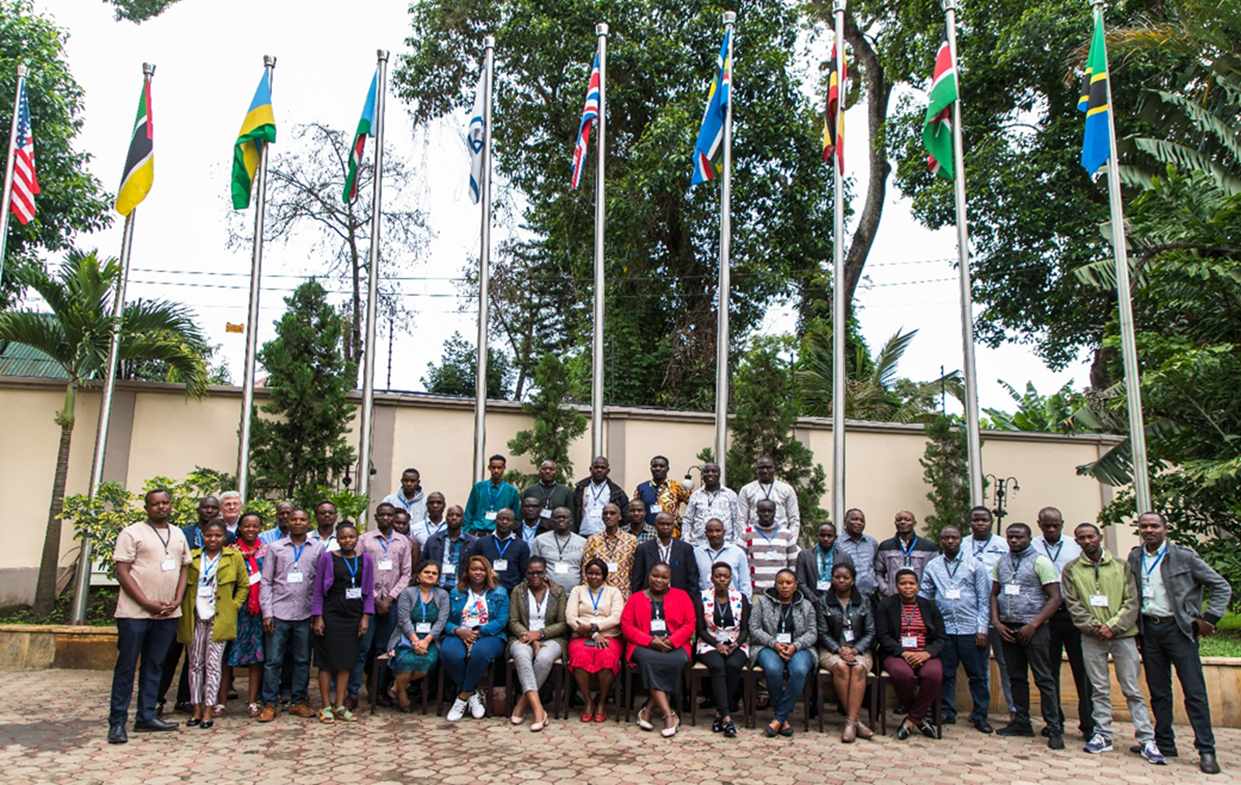Blog Capacity Building of National Agricultural Research System (NARES) Partners on common bean breeding

By Teshale Assefa, Steve Beebe, Winnyfred Amongi, Roy Odama, Eileen Nchanji, Nasser Yao, Clare Mukankusi, Jean Claude Rubyogo
As part of Alliance/PABRA’s initiative to modernize bean breeding, technicians and scientist from the Pan African Bean Research Alliance (PABRA) targeted countries in Africa, were invited for a training on bean breeding with a gender lens. The main purpose of the training was to strengthen the capacity of 54 field technicians and scientists across 30 sub-Saharan countries for four days from May 15 to 18, 2023, in Arusha, Tanzania.
The training was specially designed for PABRA member country technicians and scientists of the National Bean and Legume Breeding programs. Participants were trained on the importance of beans in the diet, genetic resources, Mendelian and quantitative segregation basics, how to combine traits in successful crosses, breeding methods, how genealogies are constructed, and the potential of interspecific crosses. Participants were also trained on Demand Led Breeding and Gender integration with respect to bean varietal improvement within the social and economic context.
A session in the field allowing reviewing concepts of bean growth habits and demonstrating the procedure for hybridization to create F1 seeds and plants. Observations on materials with different genetic constitutions of genes for Bean common mosaic necrosis virus (BCMNV) resistance permitted the recognition of virus symptoms, the effectiveness of combining two important resistance genes, and how the bc-3 recessive gene is inactivated in the heterozygous state, resulting in susceptibility to necrotic strains. Viewing populations in F2, F3 and F5 generations illustrated how advanced generations are progressively more homozygous.

Dr. Steve Beebe of CIAT (left) showed training participants pod load and grain filling at physiological maturity in the Alliance-Arusha bean field (15 to 18, May 2023)
Seven key take home messages for training participants:
1. Know your clients and their needs. This is the point of departure for your breeding program.
2. Inclusiveness and intersectionality are key. We also need to make sure we “do no harm.” And not increase inequalities with our technologies.
3. Get out of the office and go to the field frequently. Know your crop.
4. Recognize the distinctive growth habits of beans. The characteristic that defines the Type I growth habit is a main stem that ends in a flower.
5. We urgently need to deploy genes for resistance to the Bean common mosaic virus (BCMV) and Bean common mosaic necrosis virus (BCMNV). The genes are known, and we have molecular markers to facilitate this.
6. An important tool to select for higher yield is evaluating well-filled pods, focusing special attention on the embryos closest to the pedicel where the pod joins the stem.
7. Learn to read genealogies of lines as a registry of their selection history: that the last generation in which an individual selection was made indicates a likely degree of homozygosity.
As an international organization, we work with public and private sector partners to improve bean production and productivity in sub-Saharan Africa. We are especially engaging the national agricultural research institutions and private sector partners to co-develop and design high-yielding, biotic and abiotic resistance germplasm to accelerate genetic gains amidst the changing climate. Funding organizations not only expect this from us, but we expect it ourselves.
